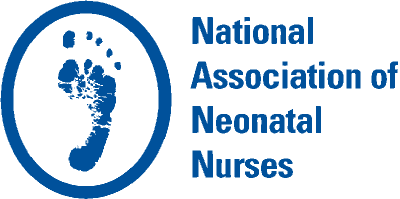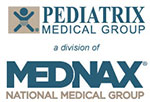Feature
Regular and Intentional Family Meetings in the NICU: A Strategy to Decrease Anxiety and Facilitate Communication
Denise Scalercio Ribeiro, MSN MA RN RNC-NIC; Juliet Sasinski, MSN RNC-NIC CNS; Leticia Ann Victorino, MSW; University of California, Los Angeles Medical Center, Santa Monica
The NICU environment can be a frightening, overwhelming place. Parents who unexpectedly find their newborns in the NICU often report feelings of distress, depression, and helplessness (Shani-Sherman, Dolgin, Leibovitch, & Mazkereth, 2018). Family-centered communication with the medical team is an integral part of the NICU experience, which may even mitigate the grieving process (Meert, Thurston, & Sarnaik, 2000). Historically, family meetings have been scheduled when infants have a serious diagnosis, end-of-life care is being considered, or a major care decision needs to be made. Studies in which family meetings were centered on delivering “difficult news,” such as new devastating diagnoses or withdrawing life support, found the clinicians dominated the meetings and focused strictly on the dissemination of the medical information (Boss, Donohue, Larson, Arnold, & Roter, 2016).
The objective of this study is to reduce parental anxiety and facilitate communication by offering routine scheduled multidisciplinary family meetings to families whose infants are anticipated to have a hospitalization greater than or equal to 5 days, within 2 weeks of their NICU admission, regardless of their diagnosis or prognosis.
Methods
This study was an interdisciplinary collaboration between the medical team and the dedicated NICU social worker. The NICU social worker identified eligible families who had an anticipated hospital admission of at least 5 days. The social worker would then arrange for an interdisciplinary family meeting with the medical team, social services, occupational therapist, discharge planner, physician, and any other specialty services. The social worker would also regularly round on the caregivers to assess for the continuing need for regular family meetings.
Two types of metrics were used to collect data. A self-report instrument called the Family Inventory of Needs (FIN) (Kristjanson, Atwood, & Degner, 1995) was given to families before and after the family meeting. In addition, three questions on the patient satisfaction Press Ganey (PG) questionnaire were collected during the baseline period for patients with a discharge date of May 1, 2015, to May 31, 2016. The first formal offering of regular and structured family meetings started in June of 2016. The same PG questions were analyzed post intervention (discharge date July 1, 2016, to July 31, 2017). In order to measure the robustness and sustainability of this intervention, the same PG questions also were averaged for patients with a discharge date of January 1, 2018, to September 30, 2018. The PG survey consists of a five-point Likert scale ranging from “very poor” to “very good” or “never” to “always”; only scores that are marked “very good” or “always” are composited. The three items analyzed from the PG survey were “Consistency of information given by the NICU clinical team”, “Did the physicians involve you in decisions?”, and “Did the staff work together to care for your baby?”
Results
Consistency of information given by the NICU clinical Team.
Baseline (05/01/2015–05/31/2016): 92.4%
Post Intervention (07/01/2016–07/31/2017): 81.3%
Sustainability (01/01/2018–09/30/2018): 90%
Did the physicians involve you in decisions?
Baseline (05/01/2015–05/31/2016): 96%
Post Intervention (07/01/2016–07/31/2017): 86.6%
Sustainability (01/01/2018–09/30/2018): 90%
Did the staff work together to care for your baby?
Baseline (05/01/2015–05/31/2016): 96.2%
Post Intervention (07/01/2016–07/31/2017): 92%
Sustainability (01/01/2018–09/30/2018): 100%
It should be noted that PG surveys are sent to participants after discharge and therefore reflect their entire NICU experience. The percentage of participants who return PG surveys is generally less than 20%. PG surveys can capture the overall trend of participant’s satisfaction, but the participants that responded to the baseline line surveys are not the same participants that responded to the post intervention or sustainability time point.
The FIN survey conducted before and after the family meeting found between 21% and 100% of parents changed the amount of importance they attached to the support, information, and assurance questions on the FIN after their family meeting.
Discussion
In order to have a score counted in the PG patient satisfaction questionnaire, participants need to mark “always” or “very good” in the five-point Likert scale. PG scores did not show a significant improvement after the implementation of routine family meetings. Patient satisfaction scores are contingent upon families voluntarily filling out a time-intensive survey post discharge. Typically, this unit receives a significantly low return rate of surveys, which makes the PG questionnaire an unreliable metric. Qualitatively, some of the comments from the PG surveys after the implementation of routine family meetings were positive:
“We were very involved with his treatment; knowing what each monitor was for and how it related to our son. I never felt uninformed or ignorant about his progress.”
“The care and treatment plan for our daughter, including all potential tests and medical issues, was clearly and sensitively communicated to us.”
The pre and post data of the FIN reflected a shift in caregivers’ priorities after the family meeting. This shift may indicate that caregivers’ priorities changed after the family meeting.
Scheduled family meetings that are on a predictable schedule facilitate communication and provide an opportunity to discuss goals of care and milestones. Predictable contact with the interdisciplinary team through these family meetings helps parents identify themselves as included in the decision-making process for their infants and helps parents focus their needs and priorities.
A limitation of this study was that it did not employ psychological metrics to measure anxiety experienced by our NICU families. This was a conscious decision to improve the delivery of information to NICU families and an attempt to preemptively reduce the anxiety that comes with a NICU admission. Future studies should employ psychological surveys to verify if the family meetings improve or worsen parental anxiety in the NICU. Future studies could also measure if regular interdisciplinary family meetings increase parental confidence, which is crucial for making decisions about an infant’s care.
Author Note
The author has no financial disclosures as this project was unfunded.
Correspondence concerning this article should be addressed to:
Denise Scalercio Ribeiro, MSN MA RNC-NIC
Neonatal Intensive Care Unit
UCLA Medical Center, Santa Monica
1250 16th Street, Santa Monica, CA 90404
Contact: This email address is being protected from spambots. You need JavaScript enabled to view it.
References
Boss, R.D., Donohue, P.K., Larson, S.M., Arnold, R.M., & Roter, D. (2016). Family conferences
in the Neonatal Intensive Care Unit: Observation of communication dynamics and contributions. Pediatr Crit Care Med, 17(3), 223-230. doi: 10.1097/PCC0000000000000617
Kristjanson, L.J., Atwood, J. & Degner, L.F. (1995). Validity and reliability of the family
inventory of needs (FIN): Measuring the care needs of families of advanced cancer patients. Journal of Nursing Measurement, 3, 109-126.
Meert, K.L., Thurston, C.S., Sarnaik, A.P. (2000). End of live decision-making and satisfaction
with care: Parental perspectives. Pediatr Crit Care Med, 1(2), 179-85.
Shani-Sherman, T., Dolgin, M.J, Leibovitch, L., & Mazkereth, R. (2018). Internal and external
resources and the adjustment of parents of premature infants. J Clin Psychol Med Settings. Sep 26. doi: 10.1007/s10880-018-9583-6. [Epub ahead of print]


